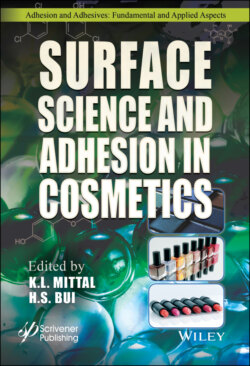Читать книгу Surface Science and Adhesion in Cosmetics - Группа авторов - Страница 69
3.4 UV Cure Oxygen Inhibition Issues
ОглавлениеAs mentioned earlier, oxygen inhibition issues with UV cure will result in coatings that have poor surface cure. Work done on early UV cure systems looked at the depth of penetration that ambient air had on the problem of oxygen inhibition.
It is obvious from Figure 3.8 that oxygen in the uncured coating will result in less favorable cure potentially all the way down to 50 μm [5]. This potential problem resulted in development of several new techniques to solve this issue of oxygen inhibition. Some of the earliest techniques utilized paraffinic waxes that were of low density and would rise from within the coating to the surface, blocking the ambient oxygen. This technique works but the paraffinic wax needs to be ground and polished to result in a high gloss finish. Another old technique shown in Figure 3.8 was the use of free radical PIs in combination with allyl ethers in the presence of oxygen to form hydroperoxides to prevent oxygen inhibition at the surface. Amines and thiol-enes will also work in mitigating oxygen inhibition. However, amines result in yellow color shades especially in light colored coatings. Thiol-ene based coatings emit strong odor before, during and after UV curing and are not a preferred chemistry for UV cured nail gels. Other method to prevent oxygen inhibition is the use of inert gases such as nitrogen, argon and carbon dioxide.
Figure 3.8 Depth of penetration by ambient oxygen in a UV cure coating. This oxygen migration into the coating is the source of oxygen inhibition by quenching the chain propagation of the free radical. The depth of oxygen penetration can be as high as 50 µm.
